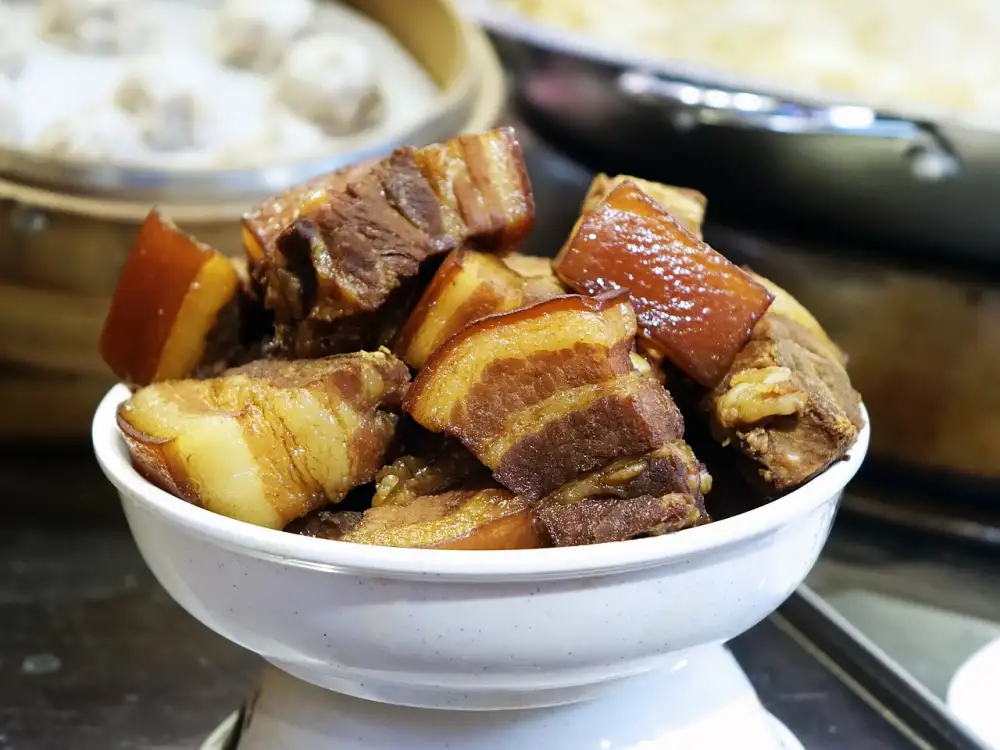Unlock Delicious Possibilities: Discover the Best Substitute for Soy Sauce in Your Recipes!

Soy sauce is a staple in many kitchens, known for its rich umami flavor and ability to enhance dishes. However, there are times when you may find yourself in need of a substitute for soy sauce. Whether it's due to dietary restrictions, allergies, or simply running out of this essential ingredient, having alternative options on hand can unlock delicious possibilities in your cooking. In this article, we will explore various substitutes for soy sauce that can help elevate your recipes and satisfy your taste buds.
Common reasons for seeking a soy sauce substitute
There are several common reasons why individuals may seek a substitute for soy sauce in their recipes. One reason is dietary restrictions or allergies. Soy sauce contains gluten, which can be problematic for those with gluten sensitivities or celiac disease. Another reason is the desire to reduce sodium intake. Soy sauce is high in sodium, and individuals who are watching their salt intake may opt for a lower-sodium alternative. Additionally, some people simply want to explore different flavors and experiment with new ingredients in their cooking. Whatever the reason may be, finding a suitable substitute for soy sauce opens up a world of delicious possibilities in the kitchen.
List of alternative ingredients that can replace soy sauce
1. Tamari: Made from fermented soybeans, tamari is a gluten-free option that closely resembles the taste of traditional soy sauce.
2. Coconut Aminos: Derived from coconut sap, this soy sauce substitute has a slightly sweeter flavor profile and is suitable for those following a gluten-free or soy-free diet.
3. Worcestershire Sauce: Although not entirely similar in taste, Worcestershire sauce adds a tangy and savory flavor to dishes and can be used as a substitute in recipes that call for small amounts of soy sauce.
4. Fish Sauce: Commonly used in Asian cuisine, fish sauce provides a salty and umami flavor that can be used as an alternative to soy sauce in certain recipes.
5. Miso Paste: Made from fermented soybeans, miso paste offers a rich and savory flavor that can be used as a replacement for soy sauce in marinades, dressings, and soups.
6. Mushroom Sauce: This vegetarian-friendly option made from mushrooms provides a deep and earthy flavor that works well as a substitute for soy sauce in various dishes.
7. Liquid Aminos: Produced from non-GMO soybeans, liquid aminos have a similar taste to traditional soy sauce but with lower sodium content, making it an ideal choice for those watching their salt intake.
8. Balsamic Vinegar: While not an exact replacement for soy sauce, balsamic vinegar adds a sweet and tangy element to dishes and can be used as an alternative in certain recipes.
These alternatives offer diverse flavors and cater to various dietary restrictions, allowing you to explore new tastes while still achieving delicious results in your cooking endeavors.
Description and benefits of each substitute option
There are several alternative ingredients that can be used as a substitute for soy sauce in your recipes. One option is tamari, which is a gluten-free soy sauce made from fermented soybeans. It has a similar flavor profile to traditional soy sauce but with a richer and less salty taste.
Another option is coconut aminos, which are made from the sap of coconut blossoms. This substitute has a slightly sweeter taste compared to soy sauce and is also gluten-free. Coconut aminos are low in sodium and contain essential amino acids, making them a healthier choice.
For those looking for a non-soy option, liquid aminos can be used as an alternative. Made from fermented vegetable protein, this substitute has a similar umami flavor to soy sauce but with lower sodium content. Liquid aminos are also gluten-free and suitable for those following a vegetarian or vegan diet.
One more option is Worcestershire sauce, which may not have the same exact flavor as soy sauce but can still add depth and complexity to your dishes. It has tangy and savory notes that can enhance the taste of various recipes.
Each of these substitutes offers its own unique benefits, whether it's being gluten-free, low in sodium, or suitable for specific dietary restrictions. Experimenting with these alternatives will unlock delicious possibilities in your cooking!
Tips for using soy sauce substitutes in recipes
When using a soy sauce substitute in your recipes, it's important to keep a few tips in mind. Firstly, remember that the flavor profile of the substitute may differ slightly from soy sauce, so adjust the quantity accordingly. Start with a smaller amount and gradually add more if needed.
Secondly, be mindful of the salt content in your chosen substitute. Some alternatives may be saltier than others, so taste as you go and adjust other seasoning accordingly.
Additionally, consider the cooking method you are using. Certain substitutes may not hold up well under high heat or long cooking times, so choose an option that is suitable for your specific recipe.
Lastly, experiment and have fun! Don't be afraid to try different substitutes and combinations to find what works best for you and your taste preferences. With some creativity and exploration, you can unlock delicious possibilities with soy sauce substitutes in your recipes!
In conclusion, finding the right substitute for soy sauce can open up a world of delicious possibilities in your cooking. Whether you have dietary restrictions, allergies, or simply want to try something new, there are plenty of alternative ingredients that can replace soy sauce.
Experimenting with different substitutes can add unique flavors and depth to your dishes. Tamari offers a similar taste profile to soy sauce and is gluten-free, making it a great option for those with dietary restrictions. Coconut aminos provide a slightly sweeter flavor and are perfect for those avoiding soy or gluten.
Liquid aminos offer a savory umami taste and work well as a replacement in marinades and dressings. Worcestershire sauce adds complexity and richness to recipes, while fish sauce brings an authentic Asian flair.
When using soy sauce substitutes, it's important to adjust the quantity according to taste. Start with small amounts and gradually increase until you achieve the desired flavor. Remember that each substitute has its own unique characteristics, so be open to experimenting and discovering new combinations.
Incorporating these alternatives into your recipes can elevate your cooking skills and bring exciting new flavors to your dishes. So don't be afraid to explore the world of soy sauce substitutes and unlock delicious possibilities in your kitchen!
Published: 19. 11. 2023
Category: Food



